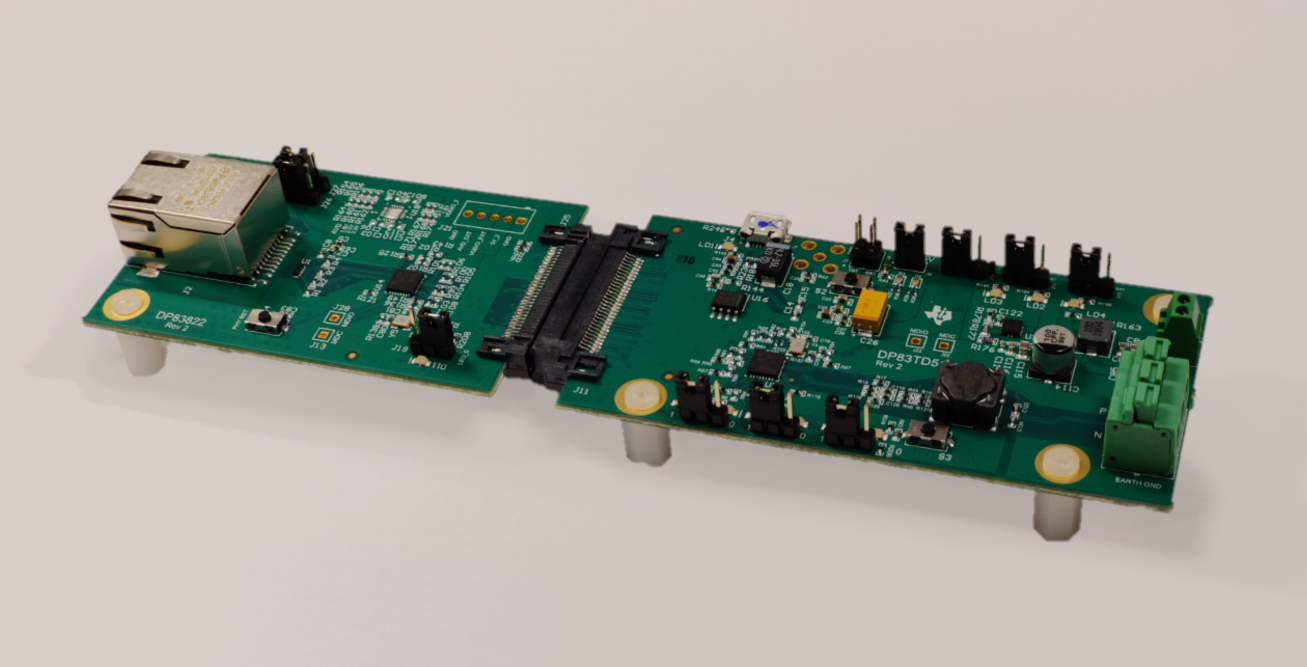SNLU271B March 2020 – June 2022 DP83TD510E
- DP83TD510E-EVM User’s Guide
- Trademarks
- 1Definitions
- 2Introduction
- 3Board Setup Details
- 4Software
- 5USB to MDIO procedure
- 6Schematics
- 7Layout
- 8Bill of Materials
- 9Revision History
1 DP83TD510E-EVM User’s Guide
This User’s Guide discusses how to properly operate and configure the DP83TD510E-EVM. For best layout practices, schematic files, and Bill of Materials, see the associated support documents.
 Figure 1-1 DP83TD510E-EVM Consists of Two PCB's: The
DP83TD510E Single-Pair-Ethernet Board and The DP83822I Media-Converter
Board
Figure 1-1 DP83TD510E-EVM Consists of Two PCB's: The
DP83TD510E Single-Pair-Ethernet Board and The DP83822I Media-Converter
Board